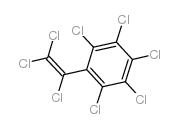Influence of iron on the induction of hepatic tumors and porphyria by octachlorostyrene in C57BL/10ScSn mice.
A G Smith, P Carthew, J E Francis, K Ingebrigtsen
Index: Cancer Lett. 81(2) , 145-50, (1994)
Full Text: HTML
Abstract
Octachlorostyrene (OCS) is an environmental contaminant, present in fish of Northern European waters and the Great Lakes of America. It has many distribution and toxic similarities to hexachlorobenzene (HCB). Administration of OCS at 0.01% of the diet to C57BL/10ScSn mice within iron overload for 18 months gave only a low incidence of hepatic nodular hyperplasia (2/10 survivors) and no hepatocellular adenomas or carcinomas. In contrast, with a similar regime, HCB causes severe liver cancer or nodules in all exposed mice. Whole body autoradiography of mice given [14C]OCS or [14C]HCB showed no gross variations in distribution or covalent binding of the radiolabelled compound to account for the difference between the chemicals in the development of tumours. In 12-week studies, the CYP1A subfamily was induced to a greater degree by HCB than OCS and iron-enhanced uroporphyria was significantly greater with HCB. The findings are consistent with the proposal that uroporphyria and liver cancer induced in mice by HCB are associated through related mechanisms, but occur to a significantly lesser extent with OCS.
Related Compounds
| Structure | Name/CAS No. | Molecular Formula | Articles |
|---|---|---|---|
 |
octachlorostyrene
CAS:29082-74-4 |
C8Cl8 |
|
Measuring nonpolar organic contaminant partitioning in three...
2012-04-15 [Sci. Total Environ. 423 , 125-31, (2012)] |
|
Organochlorine pesticides, octachlorostyrene, and mercury in...
1992-01-01 [Arch. Environ. Contam. Toxicol. 22(1) , 14-20, (1992)] |
|
The tissue distribution, metabolism, and excretion of octach...
1982-01-01 [Drug Metab. Dispos. 10(6) , 632-5, (1982)] |
|
Induction of liver microsomal cytochrome P-450 and associate...
1982-08-01 [Biochem. Pharmacol. 31(15) , 2523-9, (1982)] |
|
Induction of oxidative stress in human Chang liver cells by ...
2008-03-01 [Toxicol. In Vitro 22(2) , 367-75, (2008)] |